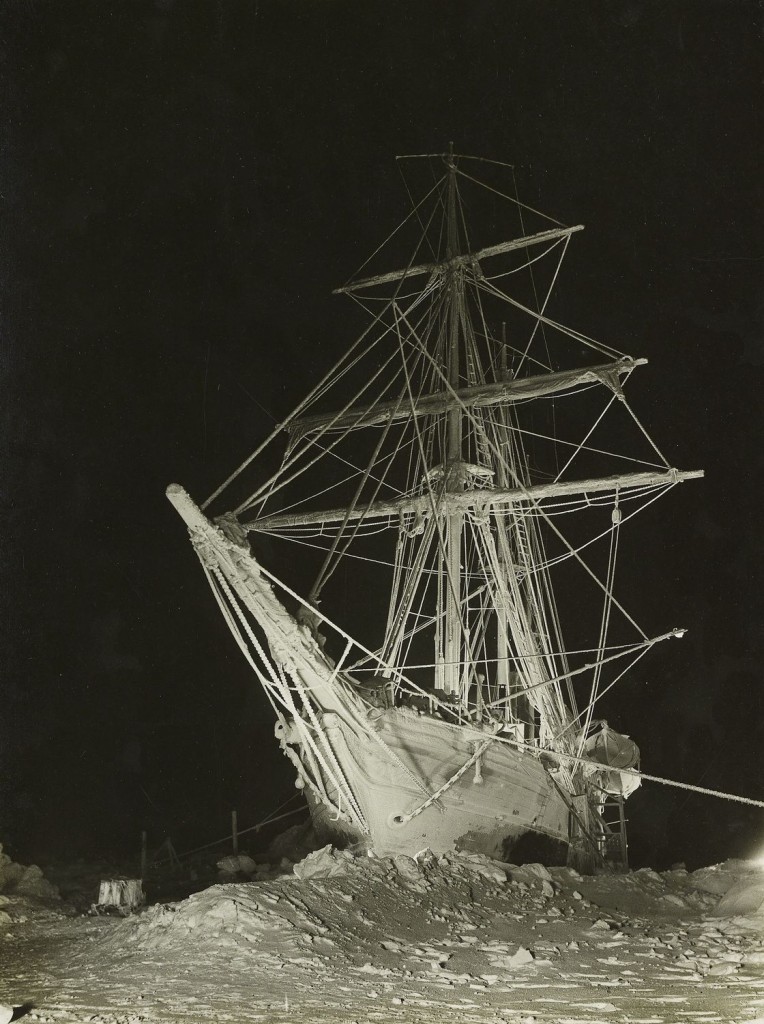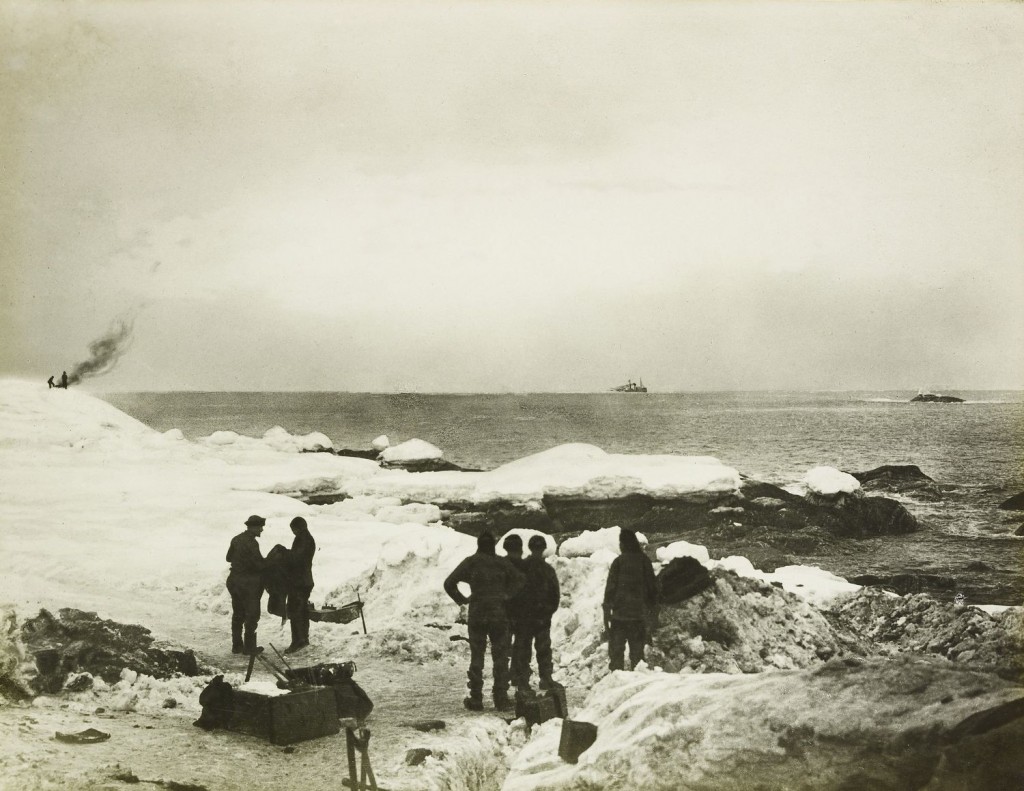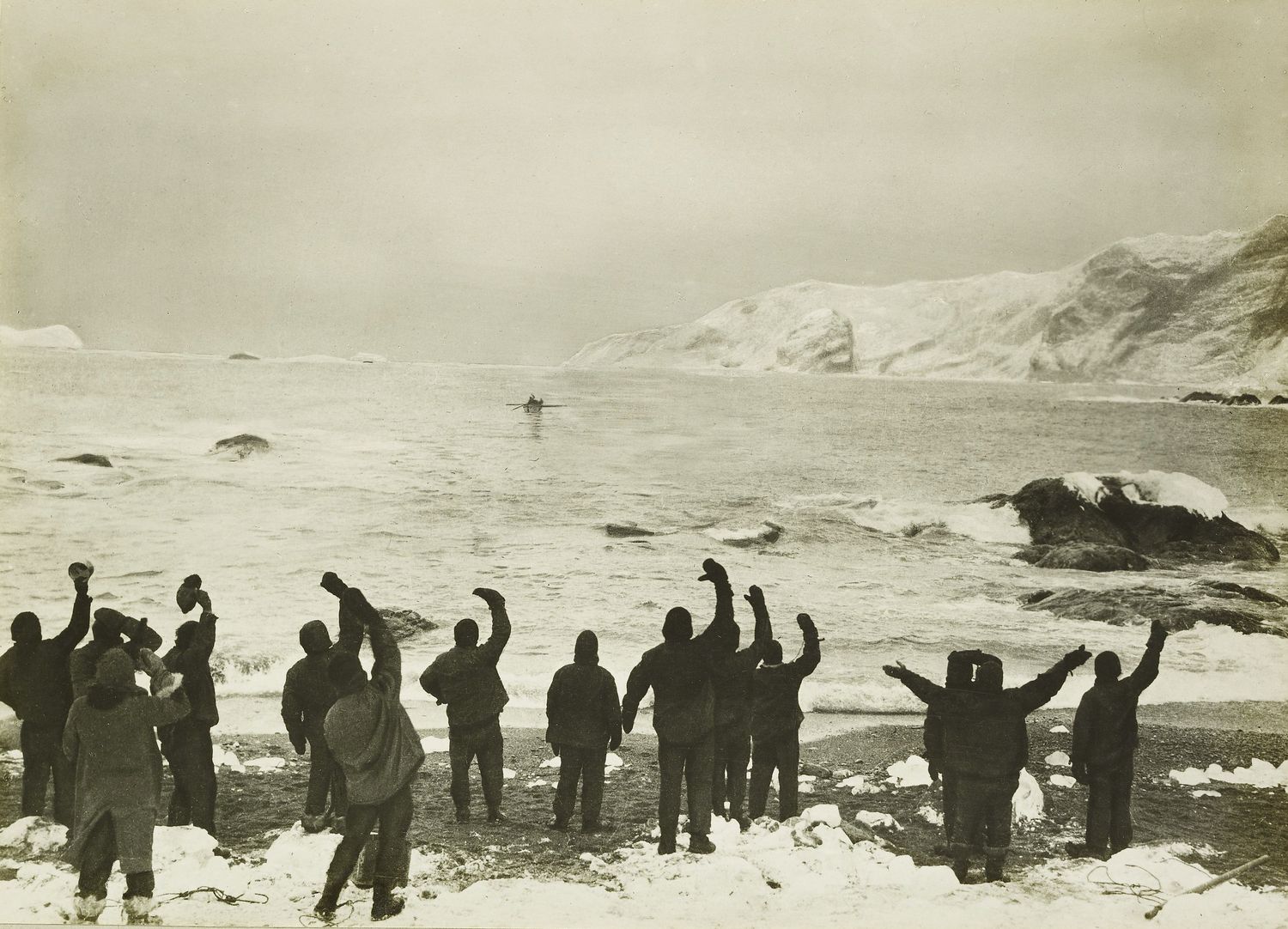This post originally appeared in 2012, before advances in artificial intelligence brought the possibility of deep fakes and other ways for storytelling artifacts to lie. Here I looked at the ways in which information can be false, and how we typically only look or check for certain kinds of veracity.
Ever since reading the comment thread for Ginny’s Lie to Me piece, I have been searching myself for the truth behind the convenient story that I am vehemently opposed to, and vigilantly on guard against, any kind of untruth in journalism.
Festivities have begun in honour of the 100th anniversary of the Shackleton/Scott expeditions to the South Pole. I know someone who’s going to be re-enacting the Shackleton expedition, tall ship and all, so I headed down to the Queen’s Gallery in Buckingham Palace to see the exhibit of photography from those trips.
Among many artfully arranged photos of penguins and icebergs, loving portraits of sled dogs and triumphant group shots of the team, there hung two photos that were different.
Elephant Island was the site of a gruelling test of survival, with fourteen men sleeping under two overturned boats, waiting for rescue by Sir Ernest Shackleton. Among them was photographer Frank Hurley.
As Shackleton approached in the relief vessel the Yelcho, the probability of survival changed dramatically for these men. It’s the kind of moment we all wonder about. What would it feel like to see salvation after looking death in the face? So it seems miraculous that someone at the birth of portable photography was able to capture this moment, as well as the actual rescue.
Here is the first, entitled “The Yelcho sighted”:
As it turns out, Hurley doctored the photo. Having taken it when the Yelcho was closer to shore, he erased the vessel on the original negative and painted another on the horizon for dramatic effect. He also added that smoke from the beacon on the left to emphasize the men’s desperation.
Though in theory I disapprove of this, it doesn’t seem to get my blood boiling like the next photo, which hasn’t been doctored at all:
In his collection, presented to King George V by Shackleton in 1917, Hurley titled it “Sir Ernest Shackleton arriving at Elephant Island to take off the marooned men, 30 August 1916”. In fact, it was taken at the departure of the James Caird for South Georgia on the 24th of April; in other words, these were men at the beginning of their endurance test, cheering on the ship to deliver them from death. They were not the bedraggled, bearded men whose faces are blackened by blubber smoke, running on fumes.
Explanations in the exhibit calmly state that the photo was renamed because Hurley had not captured the actual rescue, and he needed something to tie up the narrative. Still, I can’t seem to forgive him, because when I see a photo like this I scan it for the smallest details so that I can learn more about life. I squint to make out any expression on the faces, the postures of the people. How is it that starving, half-dead men actually respond to the arrival of help? They seem to get a super-human burst of energy and start waving their arms about and jumping. I make all kinds of inferences and store the information away. This caption, to me, is a real betrayal.
And yet, I am guilty of the same, if only by negligence. After the release of a story I wrote about a trip through a muskox sanctuary, my father – who had been with me on the river – wrote to clarify that Muskox Hill, the story’s built-up climax, had actually happened before some of the other events depicted as a lead-up. I was a little surprised but not totally shocked, as the actual narrative events were not something I’d taken notes about. I’d written them by memory. Meanwhile, I’d taken painstaking care with the expository paragraphs. How many muskox remained in the sanctuary? How many had been hunted during Canada’s colonization? How many kilometres did the river run? These were all fact-check-ready.
As with many ethical lessons, I have had to learn this one – far too late – through experiencing the effects first-hand. A story, the dynamic aspect of an article, is just as crucial – if not more so – to accuracy as the static facts within it. And it’s taken me this long to realize that.
Photos: http://www.royalcollection.org.uk



“. . . when I see a photo like this I scan it for the smallest details so that I can learn more about life. I squint to make out any expression on the faces, the postures of the people.” – I thought I was the only one who did this. I’ve spent hours staring at historical photos, trying to decode all the lost information from the few images that were preserved. Love the article . . .
Thank you for reposting this! I once reviewed a book of poetry by Elizabeth Bradfield about arctic expeditions. The book is called “Approaching Ice.” Interesting to think about what Bradfield would have thought of Hurley’s deception. Because I’m lacking eloquence at this moment, I’ll quote from what I wrote about some of Bradfield’s Hurley and Shackleton poems for The Colorado Review:
The poem “Polar Explorer Frank Hurley, Photographer on Shackleton’s Endurance Expedition (1915)” reenacts Hurley’s jump into the “slushy hold” of the sinking ship to save negatives, motion film, and plates—heavy items he carries without complaint as the crew spends months crossing an ice shelf. Bradfield casts photography as “silver nitrate / lyrics, spoken light,” suggesting that, for Hurley, art eclipses suffering.
In contrast, in “Polar Explorer Ernest Shackleton (1922),” Shackleton suffers only after his return to London. In the steady wording of a short stanza, ordinary life proves mechanistically insidious: “Home after the rescue, his wrecked ship flickered twice daily / on a London screen to his own voiced accompaniment.” Bradfield asks readers to imagine a cowed Shackleton standing onstage as the Endurance sinks again and again. She elegantly captures his journey and ours, “We all have unexplained rhythms / and echoes inside the still-mysterious landscape / of our chests.”
I think in that era of photography, when each and every frame was fantastically expensive by modern standards, you might consider that the prevailing attitude probably regarded a photograph in the same way it regarded a painting. It wasn’t *meant* to be strictly representative — certainly I doubt it ever crossed the minds of anyone at the time that they might be or should be providing grist for future anthropologists to grind — it was meant to convey to contemporaries *what it was like to be there*. If a photograph — a work of art — could be modified in such a way that it gave a more genuine feeling of *what it was like to be there* then I would imagine both the photographer and his audience would have approved.
Do yourself a favour and read Shackleton’s book about the Endurance Expedition. It’s #15 on National Geographic’s “100 Greatest Adventure Books of All Time.” An outstanding read …